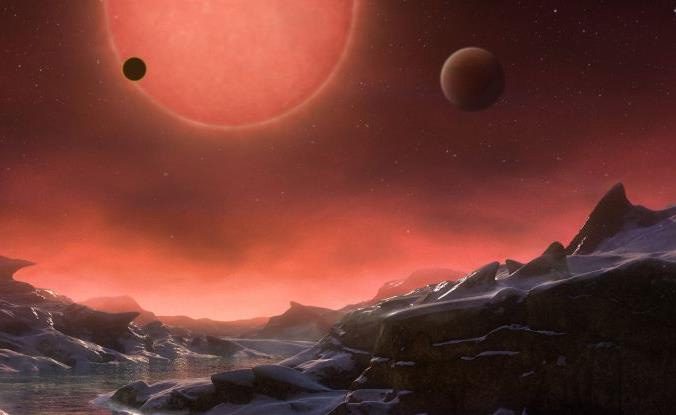Scientists have discovered that the most common type of planet in the Milky Way galaxy is a mysterious kind of planet, with a density that lies between gas giants and rocky planets.
Gas giants, like Jupiter and Saturn, have low densities due to their thick atmospheres making up most of their structure. Rocky planets, such as Earth and Mars, are compact and have high densities. For exoplanets, studying their densities can reveal what type of planet they are—whether gas or rocky.
However, according to Science Alert, a group of researchers from the University of Chicago, the Canary Islands Astrophysics Institute, and La Laguna University in Spain has investigated 43 mysterious worlds that fall in between these two types of planets.

Description of a “water planet,” a type of planet not yet classified but potentially more common than Earth-like planets – (Image: ESO).
The most plausible answer is a mysterious type of planet that has gained attention in recent years: ocean planets, also referred to as “water planets.”
These 43 planets represent many similar worlds orbiting the type of stars that make up about 75% of the stars in our Milky Way galaxy, which are red dwarfs.
However, a new complication has arisen: Most of the planets in the study are located too close to their parent stars, and calculations regarding the temperature of these stars suggest that, at such distances, liquid oceans are unlikely to exist.
Therefore, researchers Rafael Luque and Enric Pallé concluded that they must be like Ganymede—the largest moon of Jupiter and the largest moon in the Solar System, even larger than Mercury.
Ganymede is thought to be a “water-rich” world, meaning it lacks oceans on its surface but is filled with a type of rock that contains a significant amount of water, which could also appear in smaller quantities on Earth’s Moon.
To become such a world, these planets would have to form far from their parent stars and then gradually drift inward, similar to the hypothesis regarding Jupiter—the first planet in the Solar System.
This discovery may prompt astronomers to reconsider how they investigate exoplanets and establish a new model in the search for extraterrestrial life, as it may be our own Solar System that is rare, with rocky and gas planets. Water planets, which could be far more common, should perhaps be included in classification criteria.
This research has just been published in the journal Science.





















































